Reggio Emilia, Italy
This is the back story to the Reggio Emilia photographs I made in 2009. (Reggio Emilia)
In the fall of 2009 I spent a couple of months living in Italy and photographing. I was on a year long "final sabbatical "(because I was to retire a year later) from Northeastern University where I held a position as Head of the Photography Program. A year and a half earlier a friend had suggested I might like to photograph the specimens at the Civic Museum in Reggio Emilia. She knew the Mutter Museum work I had done, as her husband and I had made several trips to Philadelphia to shoot the specimens there (Mutter Museum). So, when I was teaching the summer of 2008 in Venice my teaching assistant and friend Andrea Greitzer and I took a day and went to Reggio Emilia to have a look. We found the collection was simply amazing. Andrea was my ally that day as she distracted the museum guard while I was in the back room taking snapshots of the collection. It was expressly forbidden to take pictures. But by then I knew I wanted to come back and take authorized photogaphs of the collection.
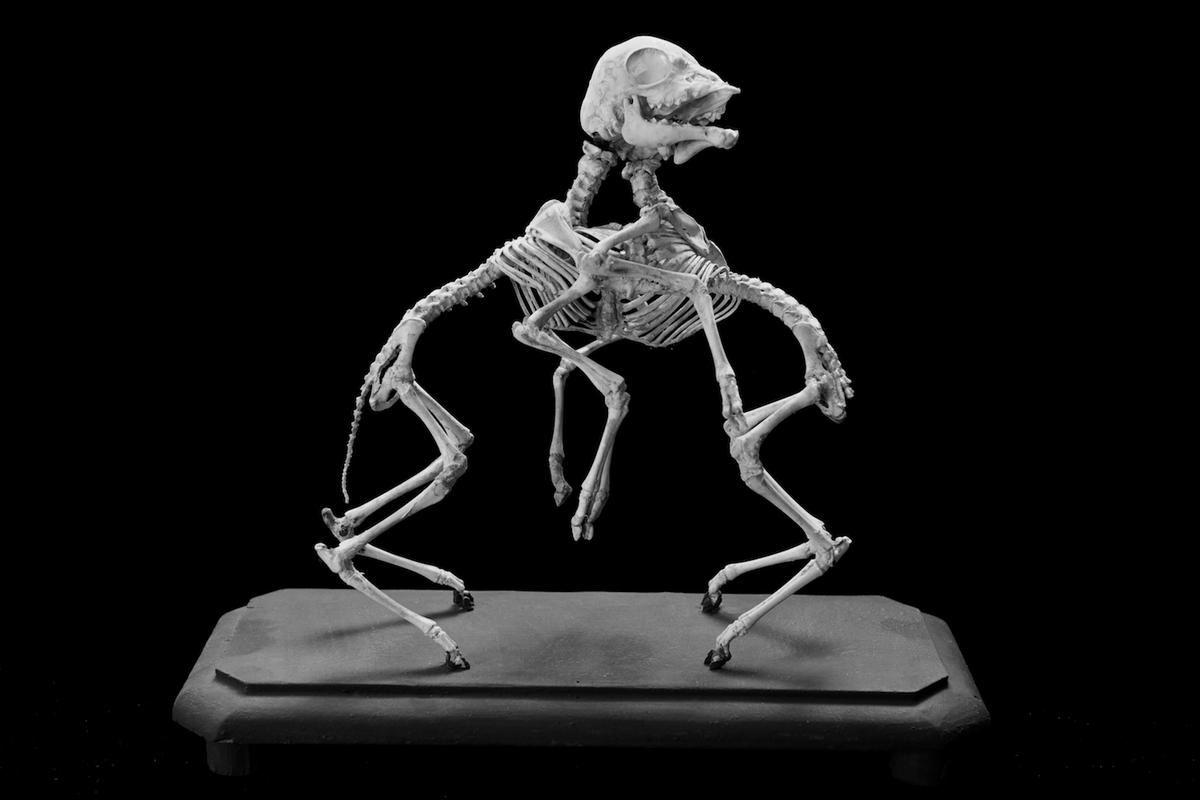
For the next year or so and while I was planning my sabbatical trip, I worked through friends and contacts in Italy to obtain permission to photograph the "Spallanzani Collection" as it is called, named after the man that had donated the items to the museum. Every overture was rebuffed, every request came back denied until I offered to share with the museum the pictures I would make. As it turned out, they didn't have good photographs of the collection so jumped at the chance to have mine.
Not only was full permission granted, they assigned a curator and an assistant to help the day of the shoot. The only date available to make the pictures was the day after I flew to Bologna from the US. So, jet lagged and dragging, we drove to the museum and set up to take pictures.
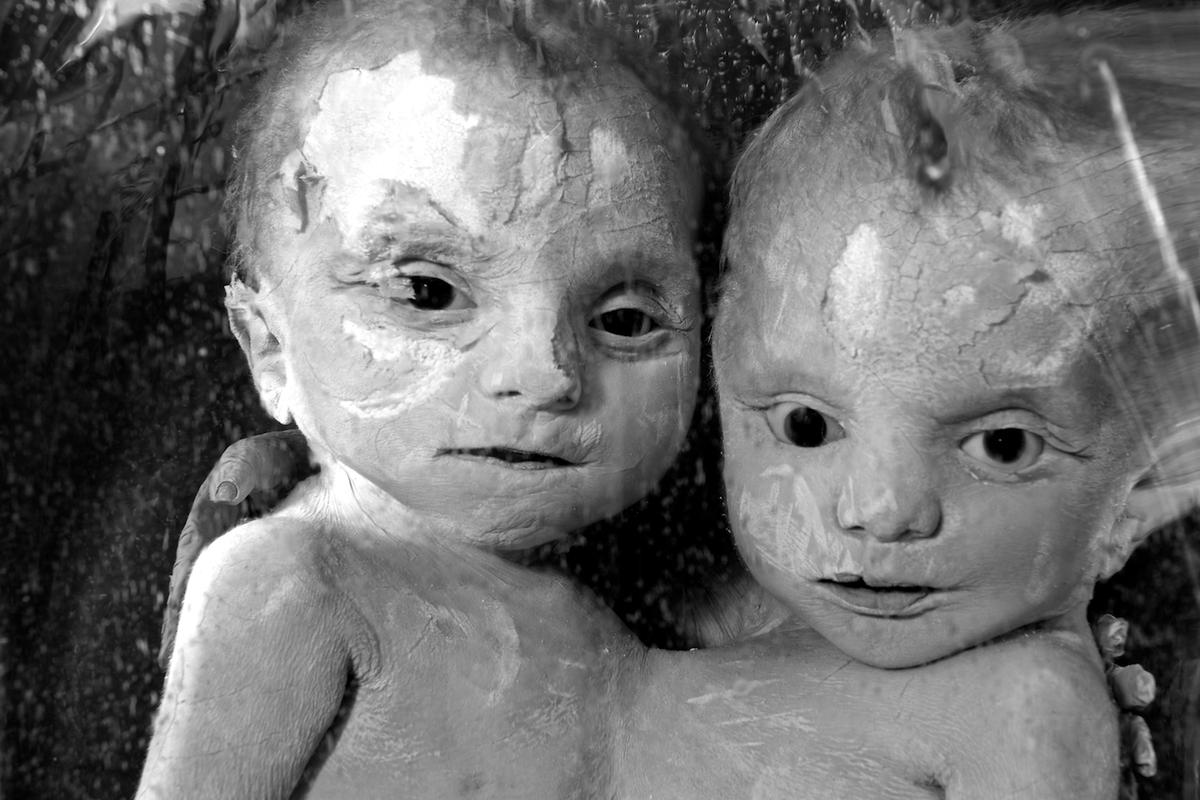 With help, I was able to get the items on display off the shelves and brought down to a space where I could control the lighting and the background.
With help, I was able to get the items on display off the shelves and brought down to a space where I could control the lighting and the background.
Being digital, the files are all in color:
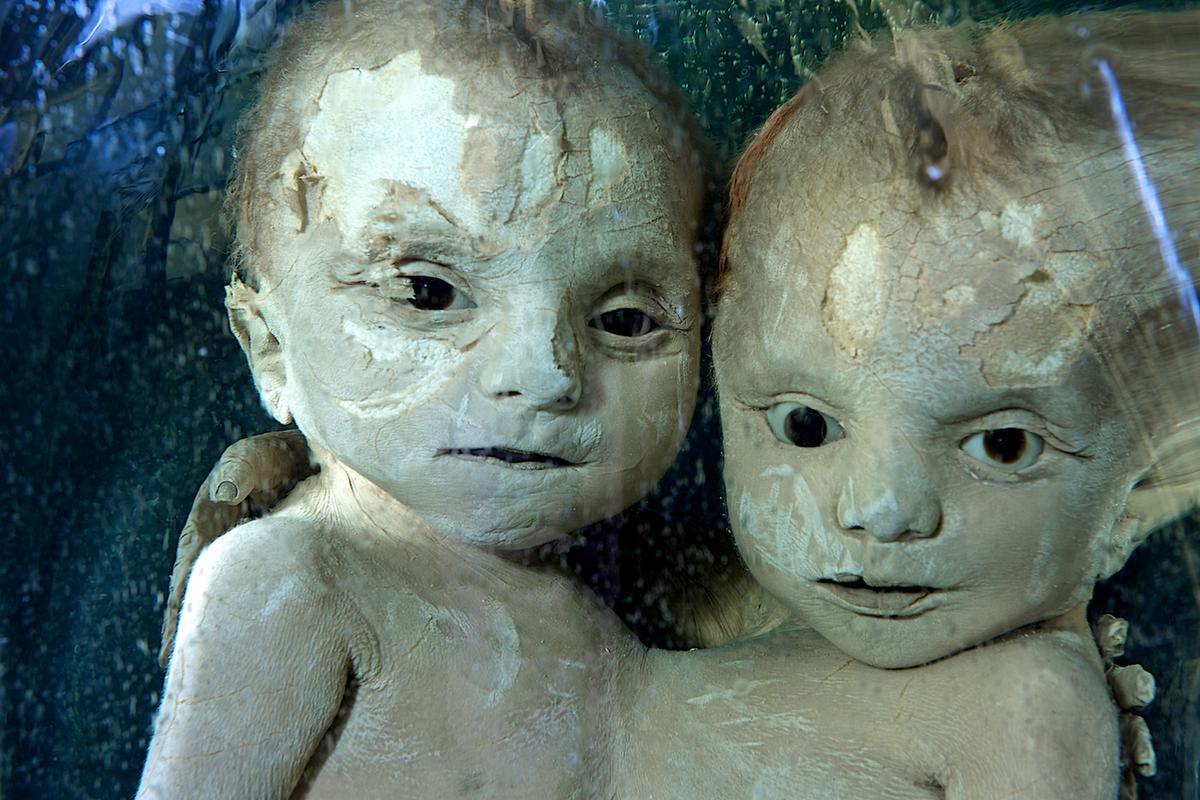 But in my mind this was a black and white project. Some of the specimens are very large:
But in my mind this was a black and white project. Some of the specimens are very large: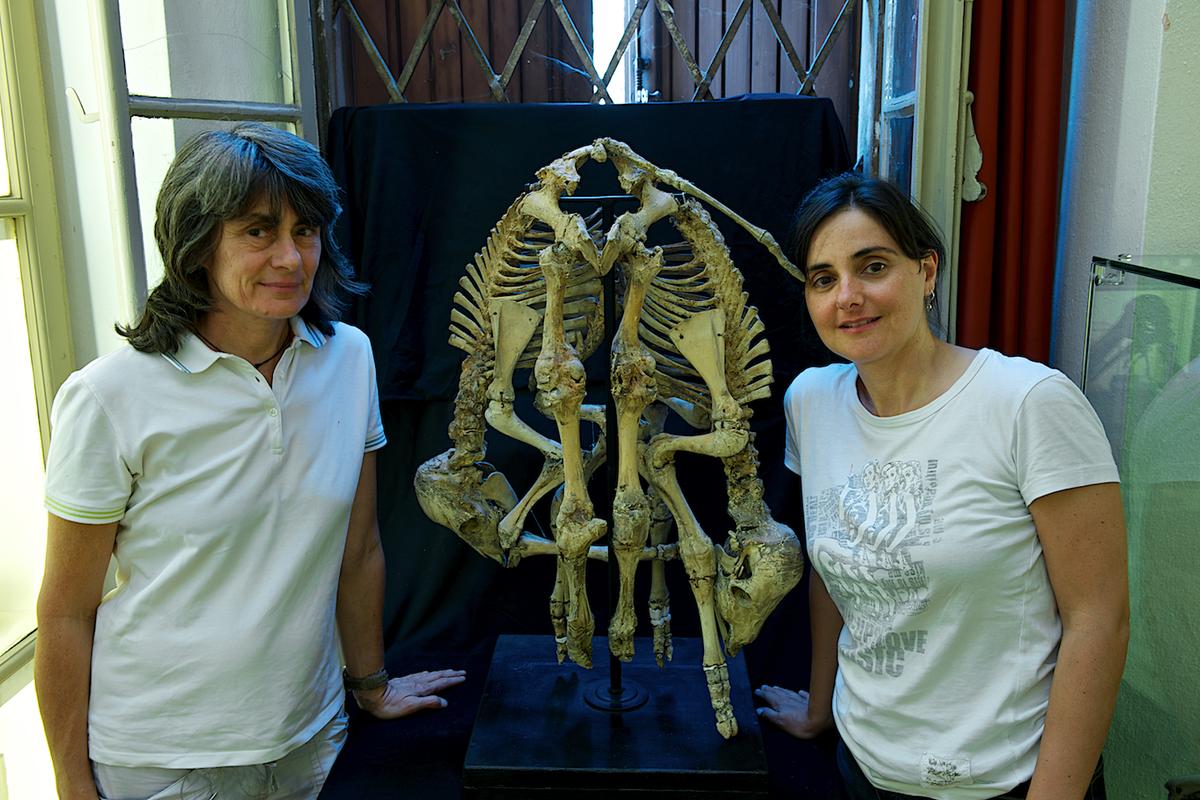
On the left is the museum curator and the right is my friend Bea who I hired as assistant and translator for the day.
Here's the final black and white photograph of that speciman:
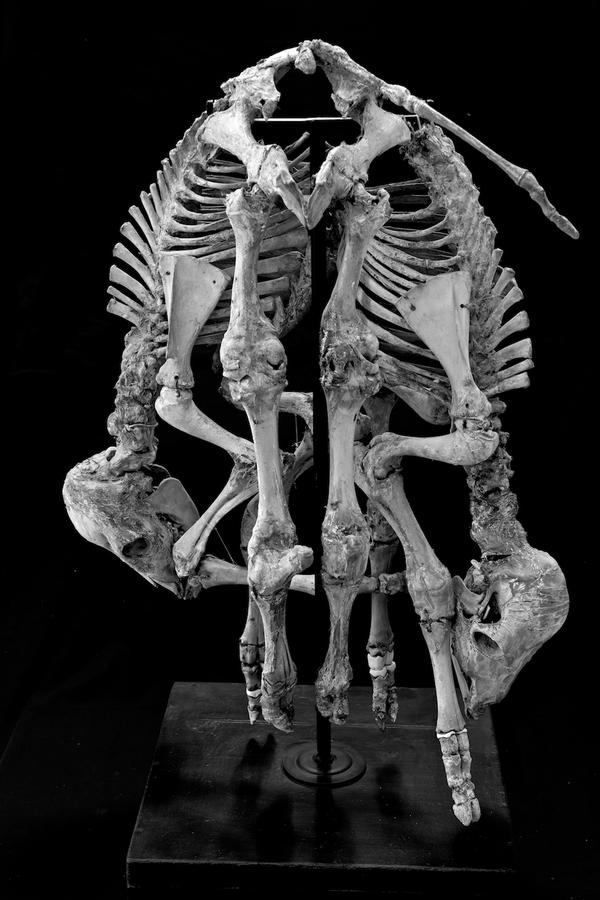
At the end of a very long day, as we were tearing down the lighting setup, the curator asked if I would be willing to make some photographs of a Boa Constrictor skeleton they had. So we did. Four of us slid the skeleton, which was 8 feet long, out of its case and down onto the floor where we'd placed black paper.
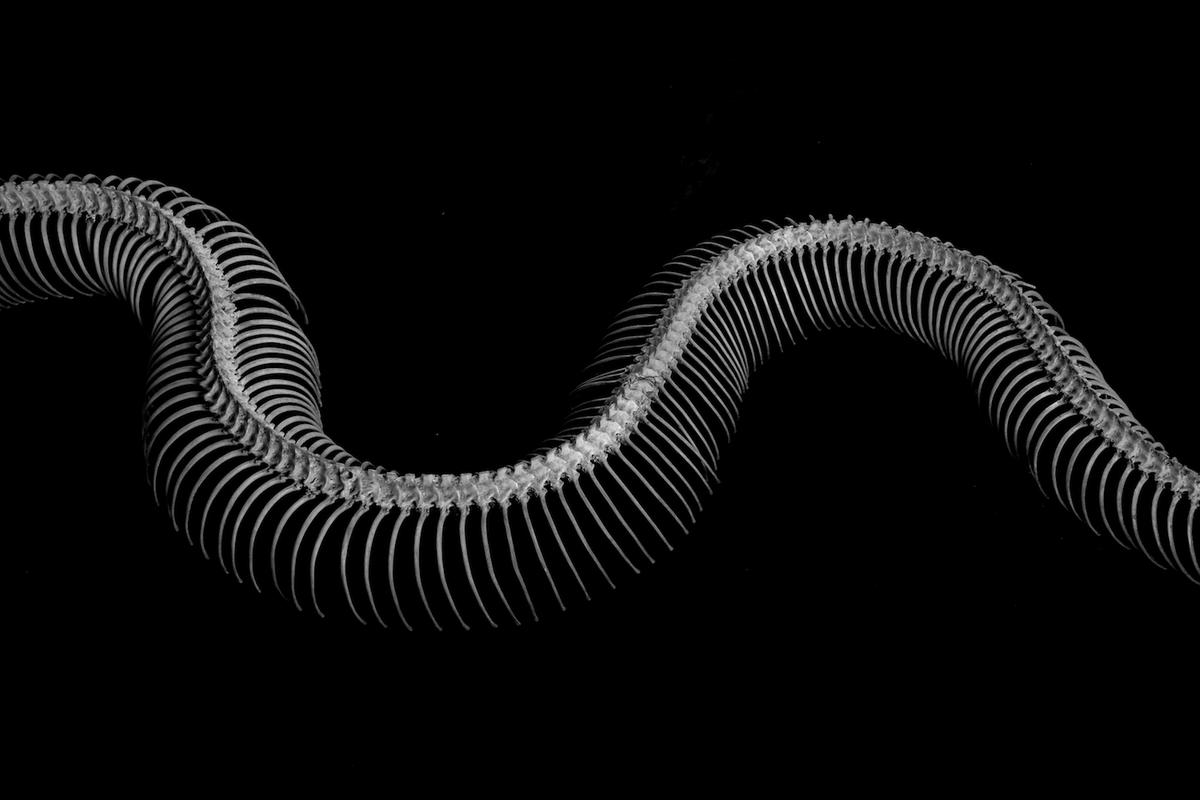
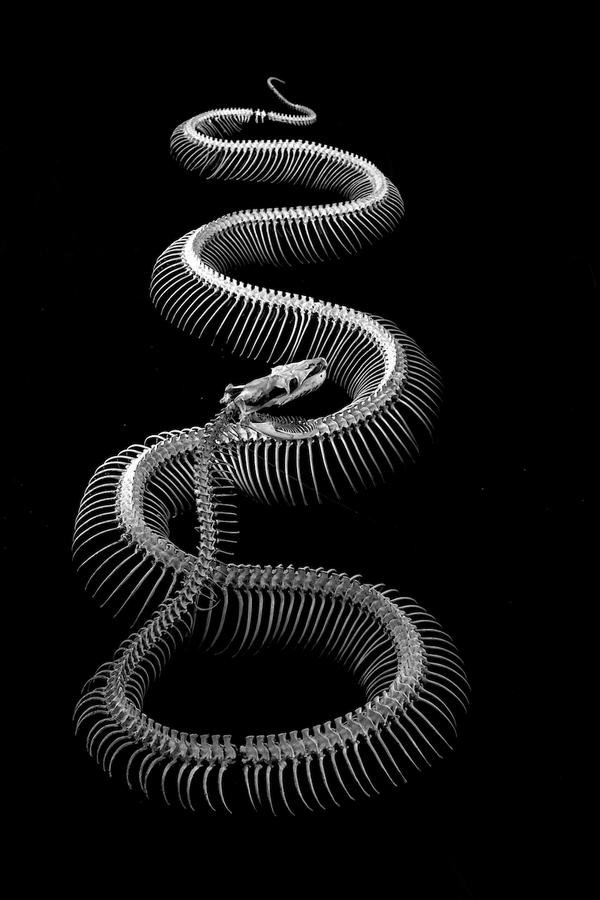
The snake's head was held up by fishing line by Bea which I then removed in post production.
The "Two Headed Calf "has become quite well known as it is emblematic of this work. Here it is shown as it is in print form:
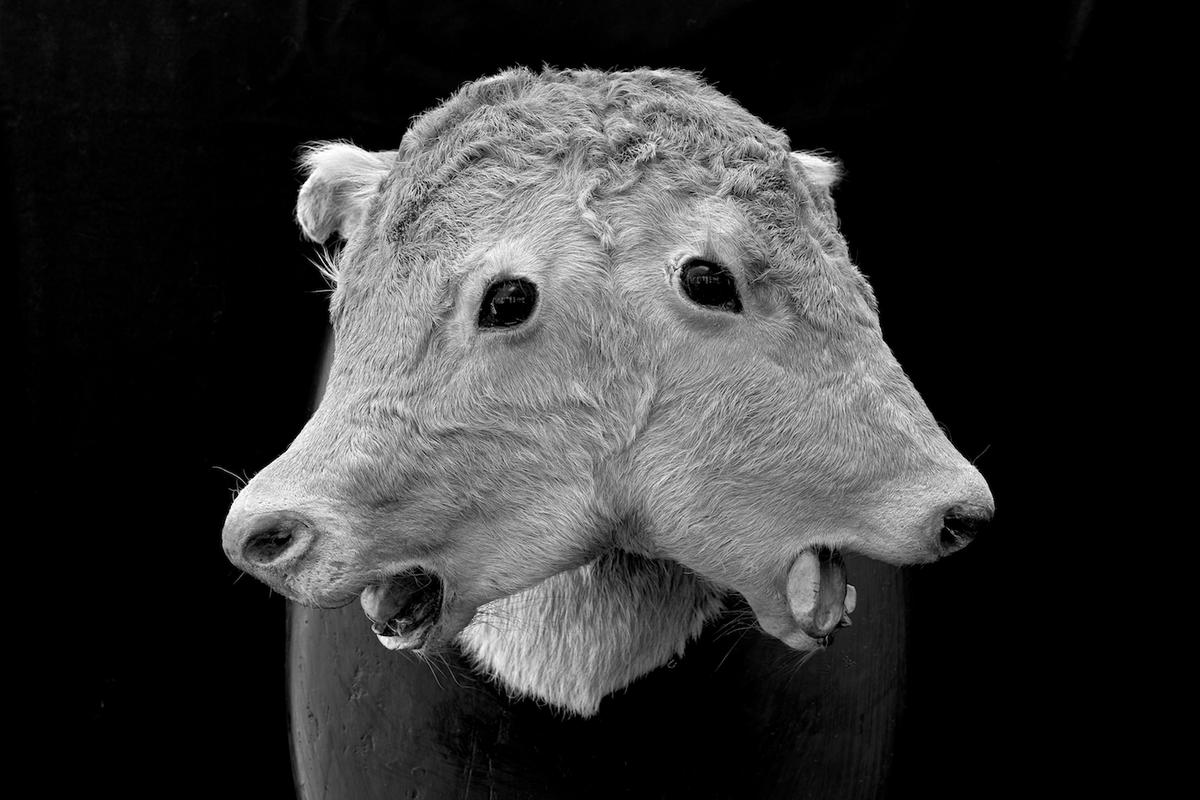
and here, for the first time, as the original color RAW file:
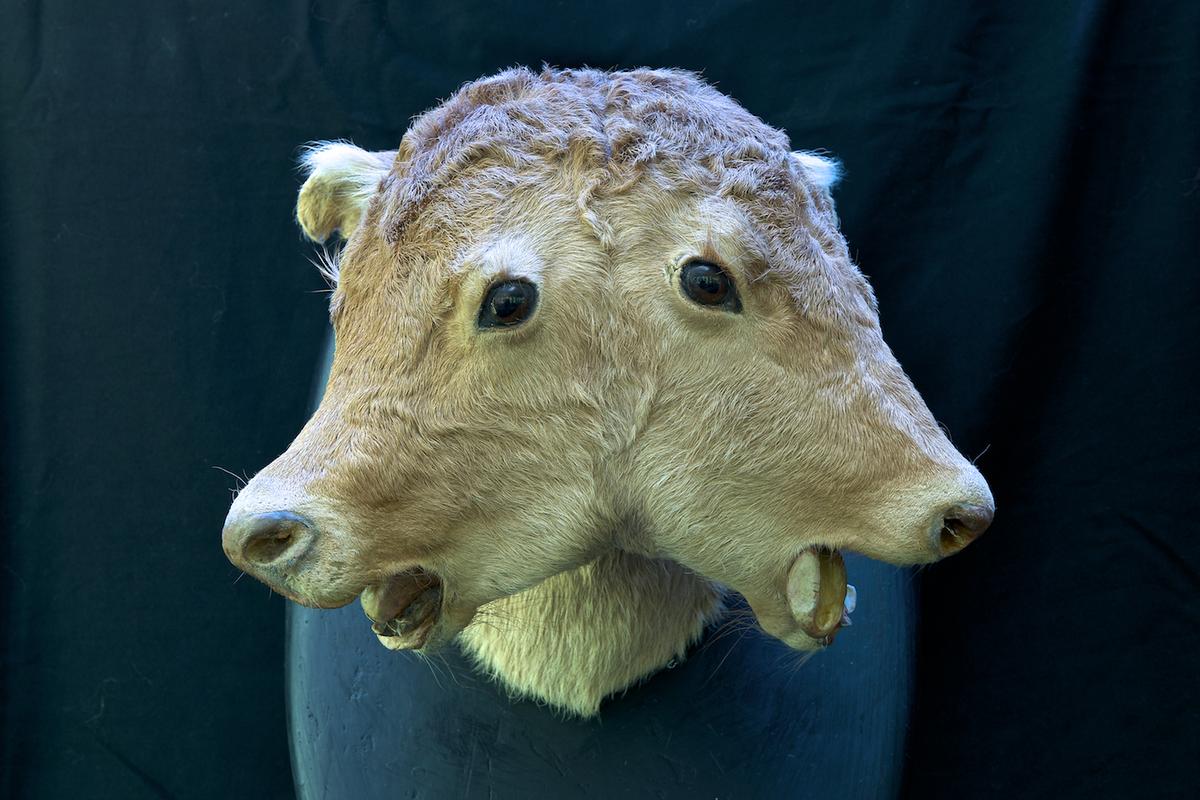
I have written before that there are times to "make" photographs and other times to "take" photographs. This was clearly the latter in that the material in front of my lens was so extraordinary and it was such a privileged condition to be allowed to photograph these specimens that all I really needed to do was to be a good photographer, to keep my wits about me and to not screw up. I like to think I did ok.
I am grateful to the Civic Museum in Reggio Emilia for allowing me to photograph the Spallanzani Collection.
